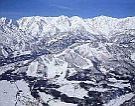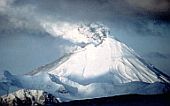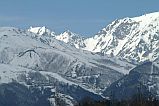|
Ski Regions of Japan
We have done some due diligence on different ski regions of Japan. Japan is coming up on the radar throughout the Australia and New Zealand region, perhaps it will be a great alternative for your next ski adventure. With the country’s economy still picking up, the exchange rate may work to your advantage. Maybe you want to immerse yourself in a different culture whilst skiing Japan, check out some reported facts and judge for yourself.
The Japanese ski domains are broken into two islands; Northern Island called the Hokkaido, and the Southern Island called the Honshuu. The statistics suggest there are over 600 ski parks or resorts scattered throughout Japan , we will only try to cover the main ones .
Further breakdown of Japans ski regions is as follows;
The region has snowboard park, tube park and a mix of beginners through to advanced runs.
Shiga Kogen. Skiing Japan has a cultural aspect which ought not to be missed, namely hot springs, and Shiga Kogen is no exception. An excellent means of relaxing after a day on the slopes. The terrain is more suited to beginners, although visiting it’s 21 ski regions may entertain intermediates as well. The neighboring Yakebitai and Okushiga resorts offer awesome tree skiing. The Sunvalley, Maurike, and Hasuike are the recommendations for young families. The vertical stretches from 1300-2000m.This place hosted the Olympic Giant Slalom. Hakuba. This ski town is the hub of about 10 towns listed below. If we come here I think it will be a destination on top of our list, as it has vast mountainous regions, which will be difficult to get bored with. Hakuba, and the neighbourhood has been labelled, by Australian skiers, as the ski mecca of Japan. The Hakuba valley offers steepest vertical of all of Japan. The word is if you want to check any Japanese ski regions out, consider Hakuba. 1 Hakuba 47 Park. Good for snowboarding. Lots of beginners’ trails essentially covering one mountain. 2 Sun Alpina. You have three ski regions; Sanosaka, Kashimayari, and Aokiko, with a vertical of 730m and 23 lifts at your disposal feeding this region .This area offers lake views. 3 Sanosaka. This area belongs to the Sun Alpina resort , but does also offers it’s own exclusive runs.It is supposed to be a five chalet suburb of Alpina. 4 Guryu Toomi. A ski tregion connected to Hakuba 47 with 920m vertical. 5 Happo One Has hosted 1998 Olympic Mens downhill. It comprises of four lift areas with the altitudes being 760-1830m, that is 1070m vertical. You have one gondola and 33 lifts. 6 Iwetake. Kids schools and child care facilities available. The vertical at your disposal is 530m.One gondola and 16 lift are available. 7 Tsugaike. A good slope for beginners as it offers wide runs at the base.You have one gondola and 22 lifts at your disposal.The vertical is 830m.Both skiing and snowboarding is allowed. Apparently heliskiing is available from this ski region. 8 Nonikura. The most Northernly slopes of the Hakuba valley offering 600m vertical. 9 Corcina.Northern exposure with verticalof 600m.It is adjacent to the above area. Nozawa Onsen. Has the longest run we could find of 10 km.The vertical is 1085m, and the ski region has 22 lifts. The terrain is expansive, with the village ridden with culture,and folklore. It is one of the oldest ski destinations of the region, retaining old Japanese history. If you are after Japanese Alpine influence this is the place to be. Nozawa is also famous for its winter festivals. Additionally there are in excess of 30 onsens (natural spas) in the area.
|







